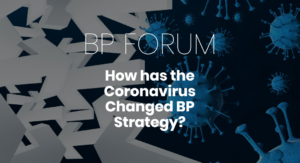BP Forum: How has the Coronavirus Changed BP Strategy?
Jun 23rd, 2020 by Frederick Spaeth | Recent News & Articles |
This article was originally published on Brand Protection Professional. View the original article by clicking here.
Given the rapidly changing landscape of our world with the COVID-19 pandemic, our strategies in brand protection are in flux. In this edition we asked practitioners:
No one expects a worldwide health pandemic. Yet these last several months the coronavirus has spread across the world causing death, illness and a disruption of business across all industries. In what way has this crisis caused a pivoting or modification of brand protection strategy?
Due to the nature of the question, we allowed for longer answers in service of this crucial question. We also included with the participant’s response, a “time stamp” indicating when their answer was received. Given the fluid nature of the effects of the crisis, we anticipate changes in strategy as practitioners continue to ensure that they are effectively protecting their brands.
 Frederick Spaeth, Esq.
Frederick Spaeth, Esq.
Dilworth IP, LLC
The Covid-19 crisis forced a re-balancing of ordinary brand protection strategies to a scale unprecedented in recent history. The shift can be seen most clearly in three areas: taking action against knockoffs, customer education, and brand expansion.
For many businesses, preventing trademark infringement has been suddenly elevated from a matter of routine brand protection to a national priority. For example, when the supply of genuine N95 respirators ran short, counterfeits carrying unauthorized NIOSH certification and brand labels flooded the market, sometimes at exorbitant prices. Desperate customers, relying on the reputation of the brands known to produce these items, were easily lured into placing orders for these inferior products. Therefore, enforcing the right of exclusive control of the use of these brand symbols had to be made a high priority to prevent respected brands from becoming associated with unexpected product failures and price-gouging. 3M has been prominent in this regard as a mask manufacturer by quickly going to court to protect its brand and its customers from over-priced, sub-standard knockoffs. The 3M company has filed suits against numerous vendors, some of whom targeted emergency officials in several states, offering to supply billions of nonexistent N95 respirators at highly inflated prices. (See 3M, 2020). A more recent report puts the lawsuits at 10.
Customer education has become a key component of preserving brand loyalty when supplies are limited and counterfeits abound. (See Clorox, 2020). Customers need to understand what component or unseen feature of a genuine product —such as hand sanitizer, hard surface cleaner or an air filter —makes the product effective, and to be assured that the brand they are familiar with is dedicated to delivering results. (See Clorox, 2020). It is also important for customers to know that a company will not take advantage of a critical need for supply of its product by demanding unfair prices. (See Clorox, 2020 and 3M, 2020). Customer education can also be a critical tool in dispelling misconceptions that can lead customers to misuse products in dangerous ways; thus, protecting the brand from potentially tragic associations. (See RB, 2020)
Thirdly, many companies, ranging from beverage producers to automobile manufacturers, have adapted their manufacturing facilities to help meet critical needs for products outside their traditional niche —such as disinfectants (See Brunner, 2020), respirators (See 4jax.com, 2020) and masks, to help respond to the crisis. In other cases, companies are making sizeable donations of their existing products or services, or available money. Efforts such as these serve to build genuine loyalty to corporate brands in indelible ways. Additionally, such efforts bring the brands into public awareness in new ways, creating opportunities for future growth.
Finally, history teaches that in meeting the challenges of a crisis, we often find new opportunities. As one outgrowth of the current crisis, the USPTO is now examining close to 200 applications to register goods or services under a COVID brand. Going forward, we may also see existing brands expand into areas that they would not have explored if they had not risen to meet today’s challenges.
This article is for informational purposes, is not intended to constitute legal advice, and may be considered advertising under applicable state laws. The opinions expressed in this article are those of the author only and are not necessarily shared by Dilworth IP, its other attorneys, agents, or staff, or its clients.


